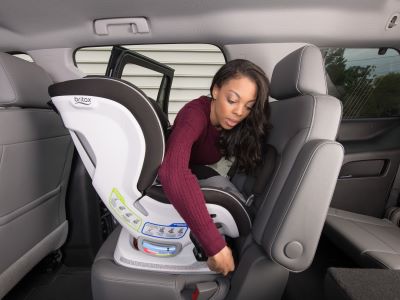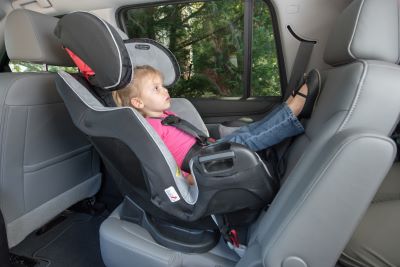Every parent wants their child to be safe in the car, but not everyone knows how to accomplish that. National Child Passenger Safety Week is an annual event dedicated to raising awareness about the importance of car seat safety. To help parents and caregivers of little ones, we’ve put together a guide on how to make sure kids are safe in the car.

How to Choose the Right Car Seat
The best car seat for your child will depend on their age, weight, and height. There are several types of car seats:
- Rear-facing car seats: For infants and toddlers up to 2 years old or until they reach the manufacturer’s weight and height limits.
- Forward-facing car seats: For children who have outgrown their rear-facing car seat. They should remain in a forward-facing car seat until they reach the manufacturer’s height and weight limits.
- Booster seats: For children who have outgrown their forward-facing car seat. They should use a booster seat until they can fit in a seat belt properly. This means the shoulder belt fits snugly across their shoulder and chest and the lap belt lies snugly across their upper thighs.
Their size is more important than their age when determining what seat they should be in. Even if your child is "old enough" to move to the next size seat, it’s safest to keep them in their seat until they reach the maximum height or weight limit for that seat.
Outdated standards suggested one-year-old children could be front-facing, but we now know that’s too soon.
Keep toddlers in rear-facing seats as long as possible. The American Academy of Pediatrics advises children remain rear-facing until they’ve reached the maximum weight or height for their convertible seat (usually 3-5 years old).
It’s perfectly safe for the child’s legs to touch the vehicle’s back seat while rear-facing, as long as they’re still within the height and weight requirements for their convertible seat. Rear-facing seats protect the child’s neck in a collision. The risk of head and neck injuries is greatly reduced when the child is rear-facing.

How to Install a Car Seat
Even though child safety seats are required to meet the same federal standards, some seats are easier to install than others. If the seat isn’t installed correctly, the child isn’t safe.
Follow these steps to install your child’s car seat:
- Read the manual: Carefully read the manufacturer’s instructions for your specific car seat.
- Choose the right seat: Install the car seat in the rear center seat if possible, as it offers the most protection. If this isn’t an option, install it in the rear outboard seat.
- Secure the base: Attach the base to the car seat and secure it to the vehicle’s anchor points or seat belts according to the manufacturer’s instructions.
- Install the car seat: Place the car seat on the base and secure it with the seat belt or LATCH system.
- Check for tightness: Be sure that the car seat is tightly secured by pulling on the top of the seat.
If you’re not sure you’ve installed the seat properly, you can have a certified technician inspect it. Visit NHTSA’s website to find a car seat inspection location near you.
Safety Tips and Tricks
Here are some tips for keeping children safe in the car:
- Never leave a child alone in the car, even for a moment. Cars heat up quickly and children are especially vulnerable to heatstroke.
- Avoid distractions. If you’re focusing on the kids in the car, you’re not focused on driving.
- Inspect your child’s seat regularly. Check for any damage, wear and tear, or recalls on the seat. It’s likely to come loose over time, so keep an eye on it.
- Utilize your rear-view mirror to keep an eye on your child. It’s safer to quickly glance in the mirror than it is to turn around in the driver’s seat to see what the child is doing.
National Child Passenger Safety Week is a great reminder to make sure your kiddo is safe and snug in their car seat. We hope this guide helps you as you navigate the world of child safety seats!
Are you interested in learning more about traffic safety?
Are you looking for defensive driving and traffic school courses? Do you want a discount on your auto insurance? Do you know a teen who’s ready to take an online driver education course?
Safe2Drive is here to help! We offer convenient online courses for drivers of any age! Visit our website today to learn about the online courses we offer in your state.